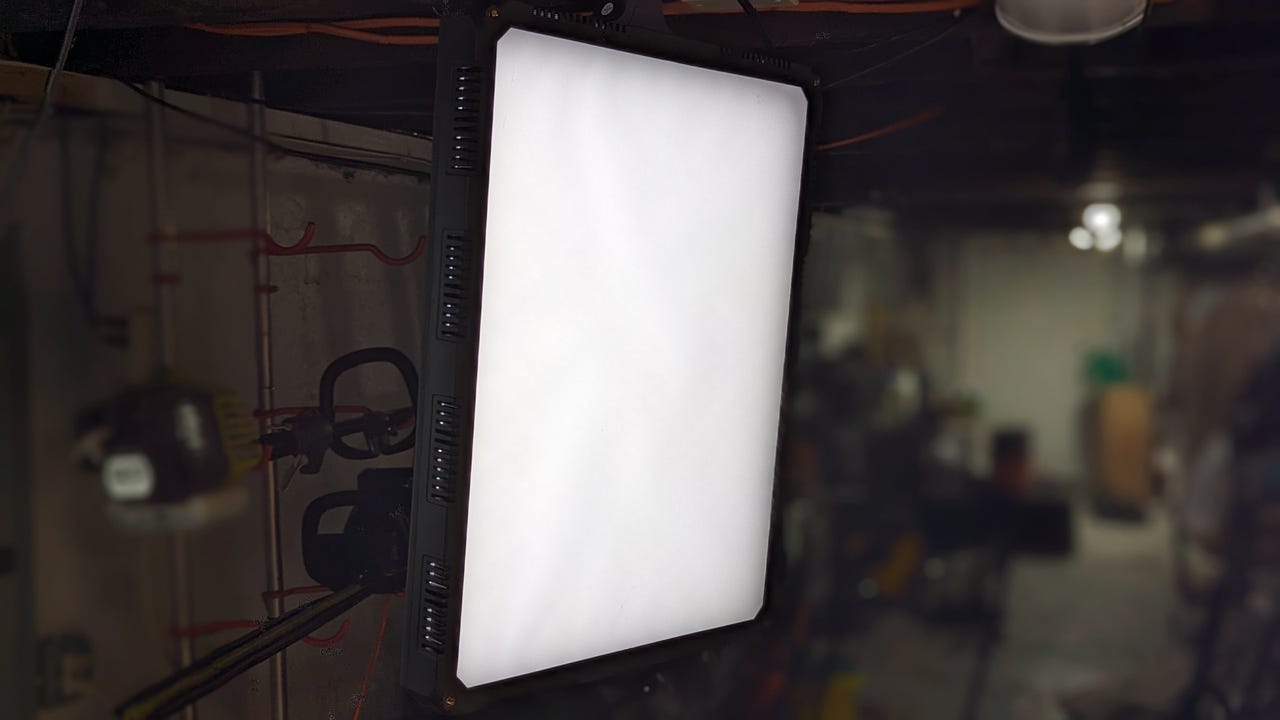
































My Nanlite Compac 68B is only running at around 33% intensity and it gives me more than enough light.
Jack Wallen/I've been producing videos for quite some time now. I've created tech videos, news videos, films, and all sorts of other video-centric content. One of themost important lessons I've learned is how lighting plays a critical role in all video production. Too little, too harsh, or the wrong color of lighting can really go counter to your goal of creating beautiful content.
Also: The best lights for streaming on Twitch, YouTube, and TikTok
To that end, I've tried many different types of lighting and have found LED to be my friend. One of the lights I use that really stands out for my personal video production needs is theNanlite Compac 68B . This brilliant LED panel delivers pro-level studio lighting that is diffused, color accurate, and requires very little setup. Attach the light to a stand, plug it in, switch it on, do a quick color adjustment (from warm to cold between 3200K-5600K), and you're ready to shoot.
If you're looking forthe instrument to light your video content, you can't go wrong with this bi-color LED panel.
View at B&H Photo VideoThe Compac 68B gives off a ton of light for the cost but very little heat and noise. In fact, I have my Compac 68B hung from the very low ceiling of my film studio (which is, in reality, just a portion of my basement) about 3 feet from my mic and the sound from the light doesn't even register. I can also stand in front of the light for extended periods of time and feel zero heat emanating from the device.
If you're looking to get your video lighting correct, you'll want the full specs on this light.
As for the LUX/Foot Candles, it looks like this:
I use my Nanlite Compac 68B as a key light for my tech and youtube videos and have found that it -- in conjunction with other fill lights -- gives me all the light I need (even in an otherwise too-dark basement). Most of my videos are shot with the Nanlite at roughly 33% intensity. If needed I could bump it up to full but it would be so bright it would wash me out.
The Nanlite Compac 68B includes a mounting bracket that can be used with most stands and tilts for better lighting placement. One thing to keep in mind, however, is that the weight and height of the 68B require a fairly sturdy stand. I've watched the light fall over on a film shoot when a cameraman barely bumped the stand. Since then, the light has either been mounted to a hanger from the ceiling in my basement or, when used on location, a heavy-duty stand. I was lucky when the light fell that it didn't crash-land on the floor, otherwise, it would have probably lost the gravity test.
The Nanlite mounting bracket can be used with standard stands and offers a near 180-degree pivot.
Jack Wallen/But don't think this light is too much for your video blog. Although the price may be a bit higher than, say, aNeewer light panel , the increased output you get with this light is worth every penny. I've tried to light videos with smaller LED panels. Typically it would take roughly four smaller LED panels to make up for the output of a single Nanlite 68B LED light box.
Case in point: Where I used to work with four Neewer panels for key and fill and two LED tubes for background light, I now only use theNanlite Compac 68B , a smaller Nanlite 24B for fill, and two LED tubes to light the background. That's two fewer lights I have to work with and I'm getting considerably more light.
Also: Ubuntu Studio is the perfect operating system for creators
There are two caveats to using the Nanlite 68B. The first is that it doesn't have a battery option. That means you're always going to need a power source for the light. The second caveat is there's no way to use the Compac 68B without diffusion. That's not such a big deal because it would be a rare occasion that you'd ever want to use harsher light for video production. If you did, you could always go with the Neewer option (as they have removable filters).
I can't speak highly enough of this light. If you are starting to get into video content production (or are just looking to vastly improve your current lighting), don't skimp on your lights and you'll find the results are far better than you expected.
 Etiquetas calientes:
tecnología
Nuestro proceso
Foto y vídeo
Etiquetas calientes:
tecnología
Nuestro proceso
Foto y vídeo